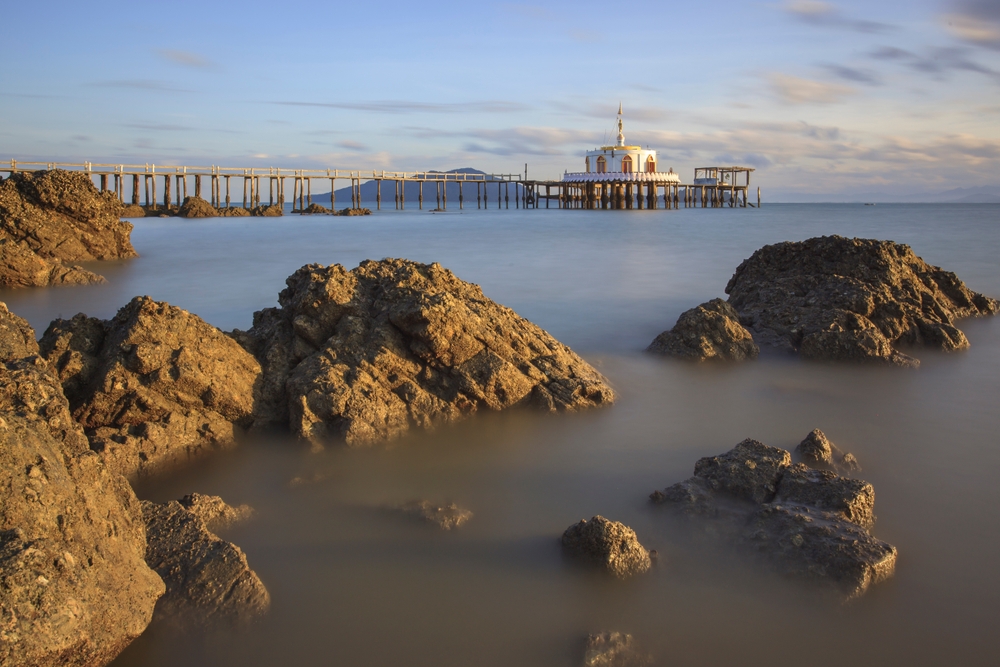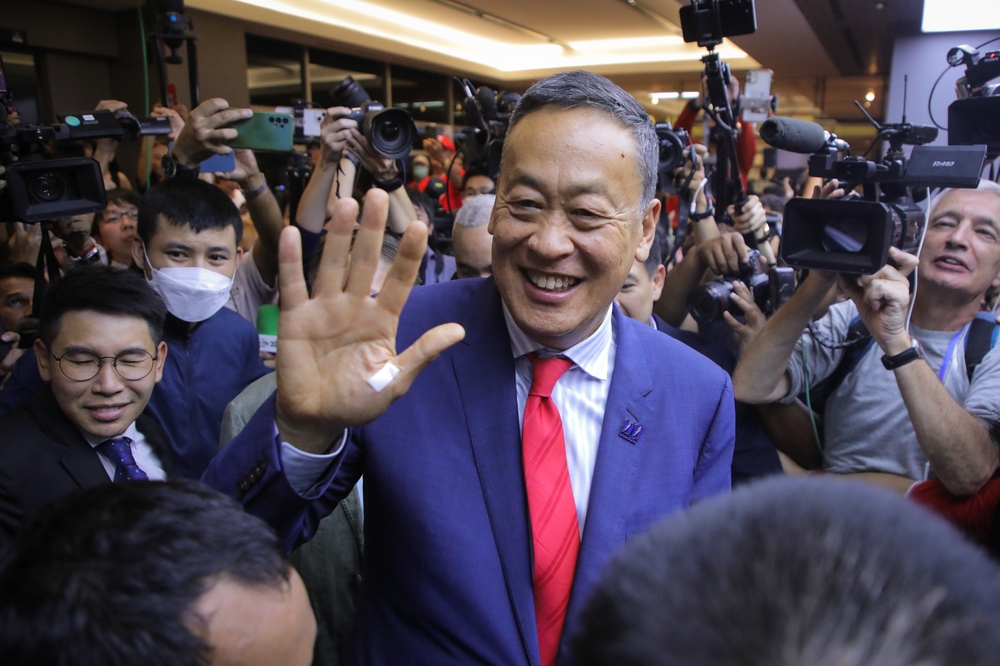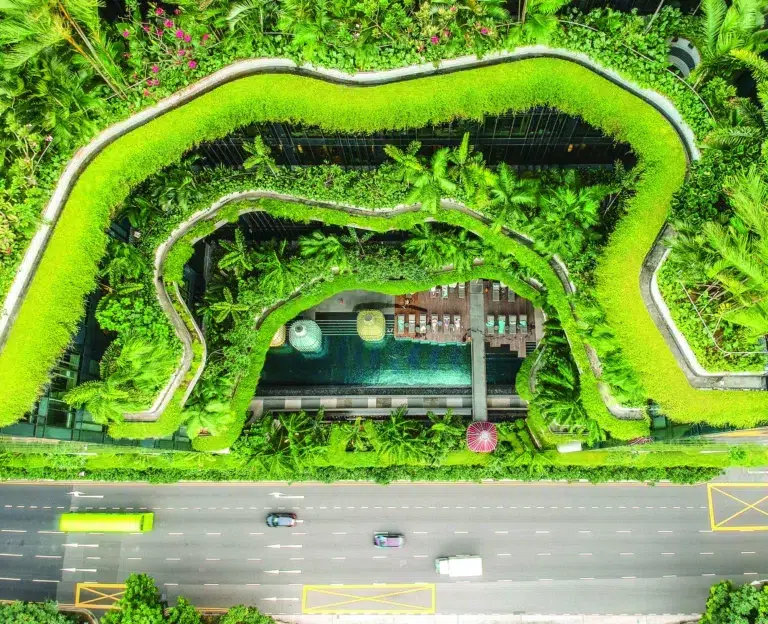From Narai to Srettha: Thailand’s long-standing dream of a shipping route revived
Will Thailand’s plan to connect the Pacific and Indian Ocean revolutionise shipping? Or is it a desperate bid to gain foreign investment for a stagnant economy?

When Thailand’s Ayutthaya-era ruler Narai the Great wanted to establish a maritime silk road between Thailand and the rest of the world in 1677, he envisioned digging what would have been the world’s first mega-canal.
A manmade waterway on the narrowest part of the Malay Peninsula, between Chumphon on the Gulf of Thailand and Ranong by the Andaman Sea, would slice through 50 kilometres of land, bisecting the Tenasserim Mountain Range that runs from Tibet to Malaysia, and bringing trade into Thailand that would otherwise need to navigate the Strait of Malacca between Malaysia, Sumatra, and modern-day Singapore.
For nearly 400 years, numerous Thai administrations have fixated on the idea of creating a shipping route through Thailand’s Kra Isthmus. And current Thai Prime Minister Srettha Thavisin is no exception. He has made a USD28-billion land bridge that would bypass one of the world’s busiest shipping lanes central to his first year in office. Indeed, the premier spent November and December of 2023 travelling the world in a bid to raise investment.
“I believe this presents an unprecedented opportunity to invest in this commercially and strategically important project that connects the Pacific Ocean and the Indian Ocean, connecting people in the East with the West,” he said during the 2023 APEC Leaders Meeting in San Francisco.
Srettha’s estimates say that the land bridge would create an additional 280,000 jobs for the region while boosting Thailand’s GDP by 5.5 percent. For shipping companies, it would potentially lower transportation costs by 15 percent in addition to cutting four days off journey times, according to Thai authorities.
On the ground, construction is set to commence in 2025, with a completion date in 2039, although the first phase of the project—which will see the construction of deep-sea shipping ports in Ranong and Chumphon—is slated for completion in 2030. Other developments include a onemetre gauge railway line to connect ports with the existing southern rail track, a motorway, and a gas and oil pipeline.
Numerous Thai administrations have fixated on the idea of creating a shipping route through Thailand’s Kra Isthmus. And current Thai prime minister, Srettha Thavisin is no exception
Any infrastructure will bring with it new commercial and industrial real estate opportunities. The government has said that it’s studying to establish new industrial estates in Ranong, Chumphon, Nakhon Si Thammarat, and Surat Thani. It has also announced plans for a Special Economic Zone Act that would ease regulations on global goods travelling between the Gulf of Thailand and the Andaman Sea.
Investors in the corridor may also find themselves beneficiaries of concessions for shipping and logistics. Speaking to the heads of nearly 30 Japanese companies in December, transport minister Suriya Jungrungreangkit raised the prospect of a 50-year concession for any successful bidder for the land bridge project. The Industrial Estate Authority of Thailand is currently investigating where any new industrial estates might be located
If Srettha’s land bridge is successful, it would eat into the trade that runs through the heavily congested Strait of Malacca, which sees 90,000 ships pass through it every year, or 40 percent of the global shipping trade, according to Reuters. Any economic benefits that the land bridge would bring to Thailand may come at the expense of its neighbours, Singapore, and Malaysia, where the maritime industry accounts for up to 40 percent of the gross domestic product (GDP).
Thailand’s inland logistics for shipping companies are notoriously inefficient. It currently takes at least a day to freight goods from Thailand’s main deep-sea port, Laem Chabang, according to Piset Rittapirom, chairman of the Bangkok Shipowners and Agents Association. Even the Thai government concedes that its best-case estimate of 15 percent transportation-cost cuts could be as low as four percent for some countries.

Most concerning to Thailand might be the lack of interest from China. In the past, China has looked favourably on a canal linking the Gulf of Thailand (and by extension the South China Sea) with the Andaman Sea, thereby alleviating China’s over-reliance on the Malacca Strait, through which it imports up to 70 percent of its oil from the Middle East. But it may see less strategic and political significance in a land shipping route.
“China is not convinced [of what] it can expect from the project,” Lu Xiang, a senior researcher with the Chinese Academy of Social Sciences, told the South China Morning Post, explaining that the cost of offloading and reloading cargo is likely to be complex and potentially no more cost-effective.
The project has also alarmed local environmental rights campaigners, who submitted a letter of opposition to the Transport Ministry in September. The Srettha government has yet to carry out any serious environmental impact assessment (EIA). What is known is that the land bridge will run within three kilometres of Mu Ko Ranong National Park and Laemson Marine National Park.
The president of the Tourism Association of Koh Samui, Ratchaporn Poolsawadee, expressed his concern to the Bangkok Post. “Tourism has been a major income provider for people across nearby islands such as Koh Samui, Koh Phangan, and Koh Tao. The revenue generated goes to the local community. Each year these areas earn more than THB100 billion in revenue from tourism,” he says.
So far, any outside investment into the land bridge remains speculative. Though the Thai government has spoken of interest from foreign investors in the US, Germany, and Japan, nothing is yet certain. In December, it released the national fiscal budget for 2025, which lays bare a huge deficit as it increases public spending by 9.3 percent. The government needs foreign money, but foreign money for the land bridge is unlikely to come without a thorough environmental impact survey and the due diligence needed to improve Thailand’s land shipping infrastructure.
As Srettha focuses efforts on gaining investor support, many observers believe the new Thai government is putting the cart before the horse.
The original version of this article appeared in PropertyGuru Property Report Magazine Issue No. 182 on issuu and Magzter. Write to our editors at [email protected].
Recommended
6 green real estate projects reshaping Asia’s future
Developers are being incentivised to push a green agenda into daring new realms
ARES White Paper Volume 3: The era of adaptive reinvention
Pioneering sustainable and innovative practices in urban development
ARES White Paper Volume 2: Unravelling the power of data revolution in real estate
Insights on proptech, smart cities, and sustainable development
ARES Digital White Paper Volume 1: The fundamentals of responsible building
Green and climate heroes join forces to discuss how Asia Pacific can weather the current environmental crises and the looming effects of climate change






